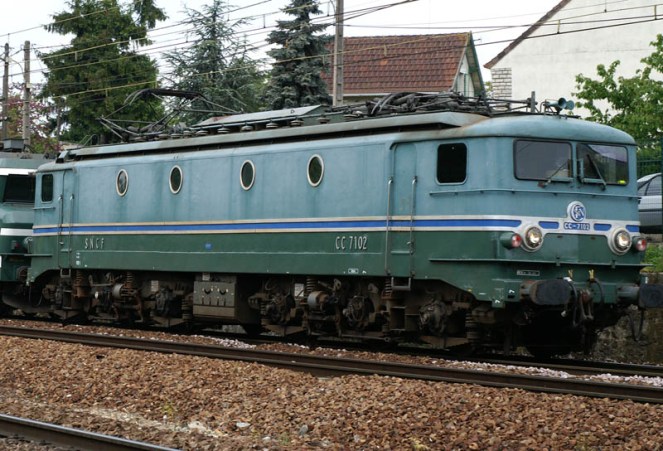The further things progress with Hyperloop, the more surreal it all becomes.
Take, for instance, today's feature in Wired entitled "How Students Built the World's Fastest Hyperloop." Basically, it's about a student competition to launch a cart down a tube, with some of the air sucked out to reduce resistance. The cart hit just over 200 mph.
KQED, in it's latest story on Hyperloop, describes things this way:
Hyperloop is Musk’s answer to what he called “outdated technology” in plans for high-speed rail in California. Musk proposed a completely new form of transportation — a fifth mode of transportation, along with cars, trains, boats and planes — and then challenged academics to make it.
Comparing it to California high-speed rail is noteworthy, since the French and Japanese spent decades perfecting the technology. The French, in fact, first achieved 200 mph in an experiment with a conventional steel-wheel-on-steel-rail train back in 1955. And, unlike the latest Hyperloop breakthrough, it was with a full-sized train.
The students did surpass Los Angeles-based Hyperloop One's run of a larger test vehicle in the Nevada desert. "That design, which the company is hoping to commercialize one day, uses magnetic levitation, like a bullet train," wrote Jack Stewart, in his his story for Wired. Except bullet trains, referring to the iconic high-speed rail network in Japan, don't use magnetic levitation at all--they use true-and-tried conventional steel-wheels-on-steel rails and have hit 275 mph.
In other words, Hyperloop remains much slower than those pesky "dinosaur" trains that use good-old fashioned tracks and wheels.
Magnetic Levitation technology, which floats the train a few inches above a guideway (no wheels required), also isn't original to Hyperloop. That's used commercially in China on the Shanghai Maglev train that runs to that city's airport. That train, which started carrying passengers in 2004, uses German Maglev technology that was in development for decades. It tops out at 268 mph. The Japanese, meanwhile are building a Maglev between Tokyo and Nagoya, which should be operational by 2027. The Japanese MagLev currently holds the train speed record, at 375 mph.
The current conventional steel-wheel-on-steel-rail speed record, by the way, was achieved by the French in 2007, at 357 mph.
Again, the Hyperloop miniature test train achieved a "record" speed of just over 200 mph.
But the Hyperloop videos sure look cool.
As Streetsblog has pointed out before, the Hyperloop is confusing local government officials--and apparently mainstream journalists. Elon Musk, despite his clear technical and business acumen, is partially responsible for that confusion. The contest and companies developing this "new technology" are also re-gifting bad ideas, such as curing traffic by building new freeways.
If Musk wants to sponsor an engineering contest, that's great. And congratulations to the winners. But nobody really questions that this can be done on a small scale, in a test; the physics are sound and they're not really doing anything new. The real engineering challenge is going much, much faster than conventional trains and then scaling it up into a system that is big enough and safe enough to carry cargo and people over hundreds of miles.
In other words, until they actually achieve jet-airliner-like speeds, and show some ability to scale things up into a usable system, perhaps they should stop with the science fiction videos and claims of records broken.
In the meantime, if you like videos, here's some more perspective of how fast today's "dinosaur technology" trains go in France:






